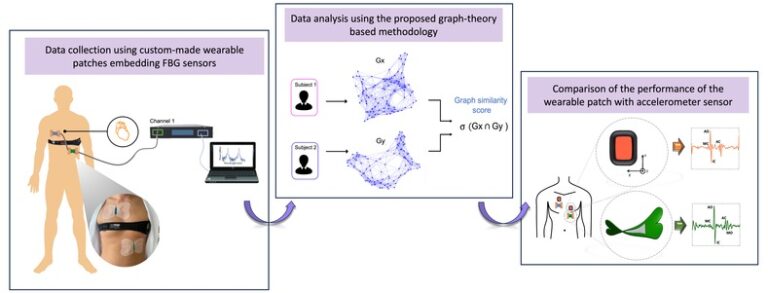Seismocardiography shows promise for non-invasive cardiac monitoring, offering insights into hemodynamic parameters and cardiac mechanics. However, there is a lack of standardized sensor placement for optimal data collection. We propose and validate a graph theory-based approach to address two significant challenges in wearable seismocardiography: i) optimize sensor positioning on the chest by assessing seismocardiogram (SCG) waveform similarity and measurement repeatability; ii) advance the validation of wearable systems based on Fiber Bragg Grating sensors (FBGs) for SCG recording, representing a significant step forward in this field.
The proposed methodology was tested on 11 healthy volunteers using custom-made wearable patches embedding FBGs. Signals were collected from the mitral valve and aortic valve auscultation site in three different postures: supine, sitting, and standing.
For each signal, a graph was computed via the k-nearest neighbor technique and the obtained graphs were used to compare signals belonging to the same group. A Group Similarity Score (GSS) expresses the repeatability of the measurement in each position. The same analysis was performed on signals with respect to posture.
Results revealed that the best performance in terms of measurement repeatability is obtained with the sensor on the mitral valve and the subject laying down. These results were confirmed by the additional physiological information analysis and are independent of the system used: a comparison analysis was carried out on a single subject using the FBG-based wearable patches and accelerometers simultaneously. These findings are a step forward in the optimization of sensor positioning in wearable seismocardiography and can be exploited to design more efficient protocols.

